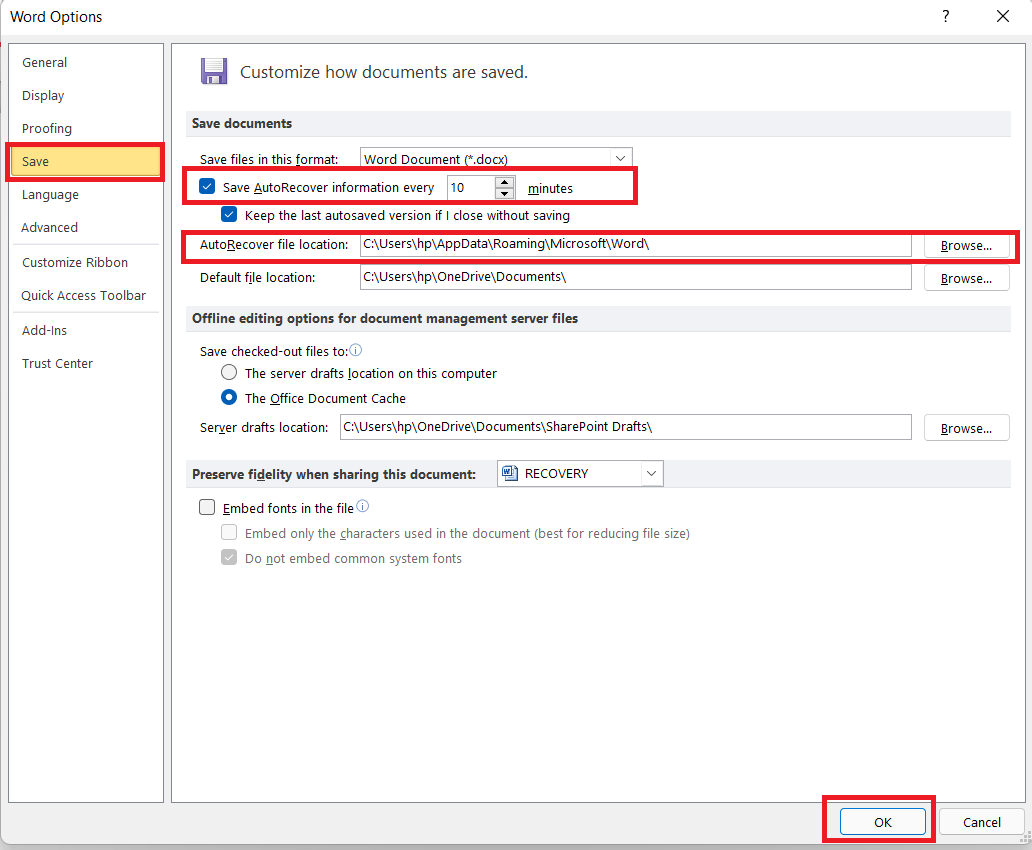
If you often write, edit, or handle Word documents, you probably have first-hand experience with how painful and easy it can be to lose one. Say, if you’ve been organizing your working folder and accidentally deleted a newer version of an important file instead of the older one. Or if your computer crashed while you were working on an important document.
In such cases, there’s an array of data recovery methods to choose from and restore your Word files.
🔎 While the recovery process may seem intimidating, it doesn’t have to be complicated. Let’s look at all the available methods to help you choose the one that best suits your requirements.
Yes, your Word files can be recovered easily if you choose the tool that best fits your requirements. There are also specific steps and precautions that you must follow to ensure safe, efficient file recovery.
🚩 Since Word documents are so commonly used, they can be lost due to careless or accidental deletion that you probably won’t notice until much later.
However, if you realize you’ve lost your file and need to get it back, start the data recovery process immediately. Here, the sooner, the better. In such cases, you can often find your files in the Recycle Bin or employ simple, DIY methods to retrieve them.
However, if they don’t work or you’ve used Shift + Delete to remove the file, you can shift to professional data recovery software.
If you lose your files due to human error or system crashes, Microsoft Word has a beneficial feature called AutoRecover that can help you restore your documents. If you’ve enabled AutoRecovery, Word will keep saving your file at regular intervals of time while you’re working on it. This eliminates the need to save the document manually and even creates a temporary folder to recover the file if a data-loss situation arises.
You can turn on AutoRecover by following these steps:

Go to File < Options < Save < Save AutoRecover information every _ minutes.
There’s another way for you to find your lost files using AutoRecover. If you also have the Always Create Backup Copy selected, Word automatically creates backup copies of your files.
These files are saved with the .wbk extension, and you can find them by going to this field:
Now, head to the mentioned AutoRecover location and open the .wbk backup files just like you would regular Word documents.
There’s another way to find previous versions of your Word documents using the AutoRecover feature. If Word does not show your file even after AutoRecover has been turned on, you can look for them manually. These files use the .asd extension. You can recover these .asd files by following these steps:
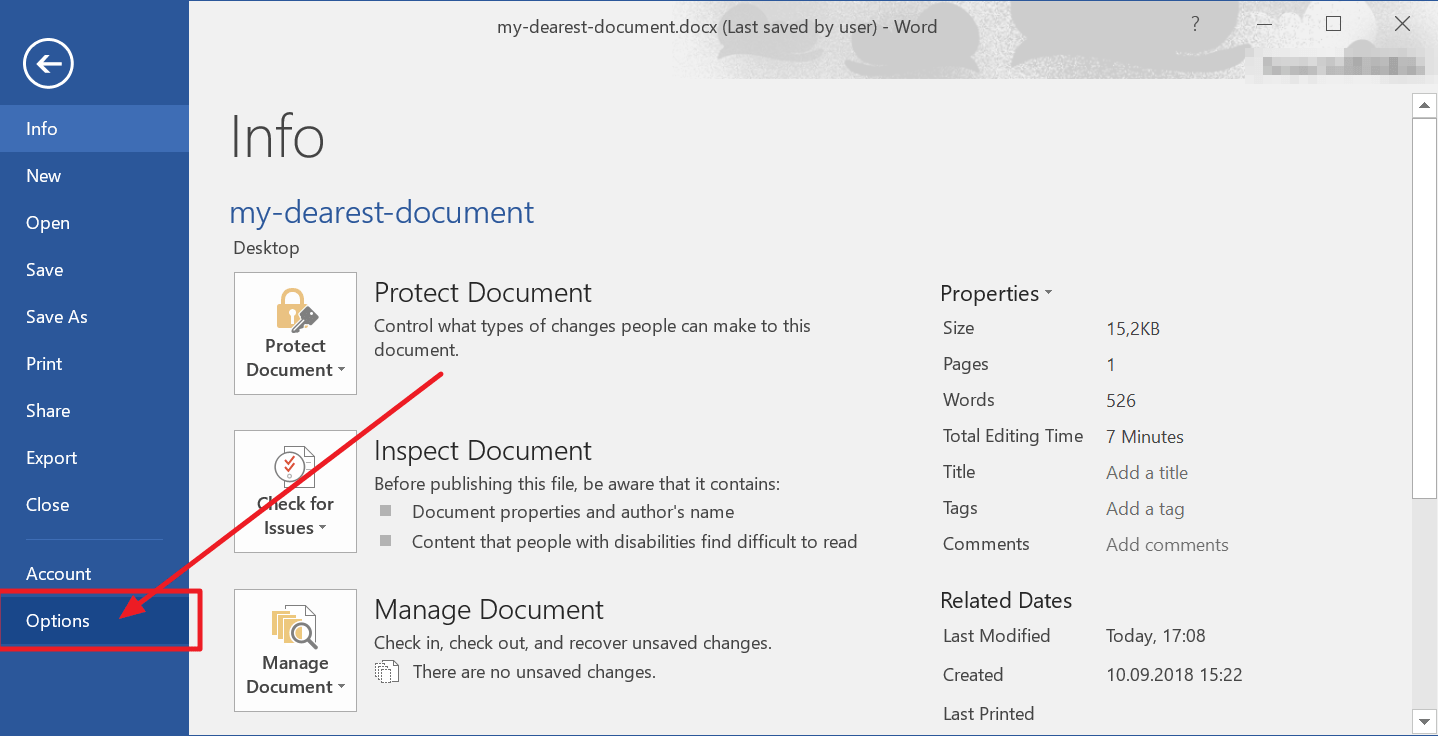
If you’ve turned on AutoRecover and you experience an unexpected computer crash, you don’t need to worry. There is a simple, straightforward method that will help recover your file. Word automatically restores the document you had been working on. You just need to follow these instructions:
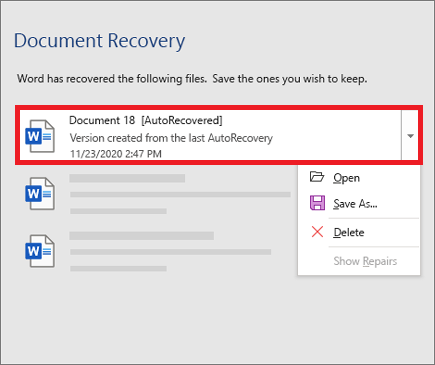
For some time now, Word can save documents to the cloud, allowing you to access your files from anywhere and easily collaborate with others. To take advantage of this feature, you need to be a user of OneDrive, which is Microsoft’s file hosting service and synchronization service.
You will then get the option to save files to your OneDrive account instead of saving them locally on your computer. When a file is stored on OneDrive, you can enable the AutoSave feature by clicking on a button located in the top-left corner of the main Word window to save your documents automatically, every few seconds, as you work.
💡 Because OneDrive has its own Recycle Bin, it can help you recover documents that were accidentally deleted using the Shift + Delete shortcut.
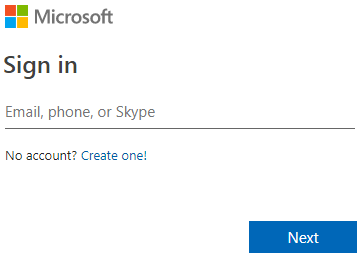

🗑️ Another effective method that can help restore the Word doc files you’ve deleted accidentally or purposefully is from the Recycle Bin. This folder stores your files temporarily, and you can recover your recently lost files using this method without a lot of effort.
Let’s look at the Word file recovery process from the Recycle Bin:
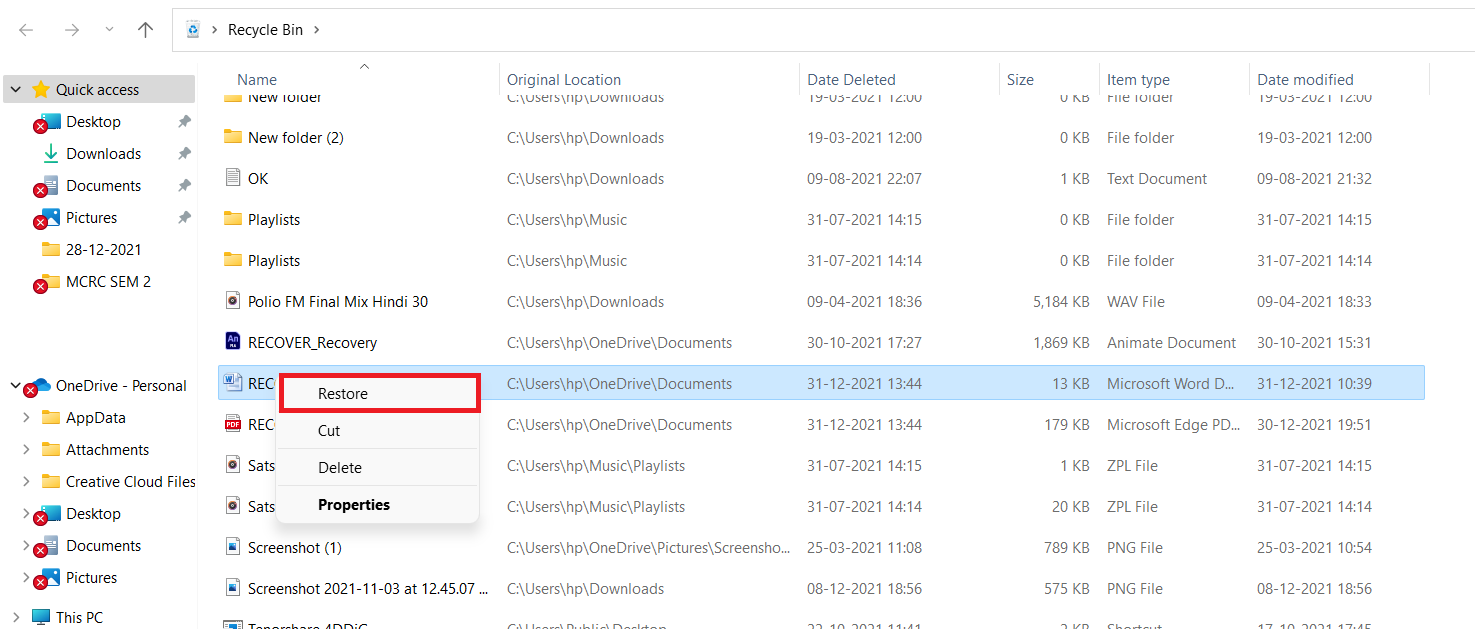
![]()
Disk Drill is a data recovery tool that delivers professional results even though it was developed with the average user in mind.
Thanks to Disk Drill, you can avoid spending hundreds and maybe even thousands of dollars on professional data recovery services while achieving the same results—just from the comfort of your own home and possibly even for free because Disk Drill lets you recover up to 500 MB of data without paying, which is more than enough for hundreds of Word documents.
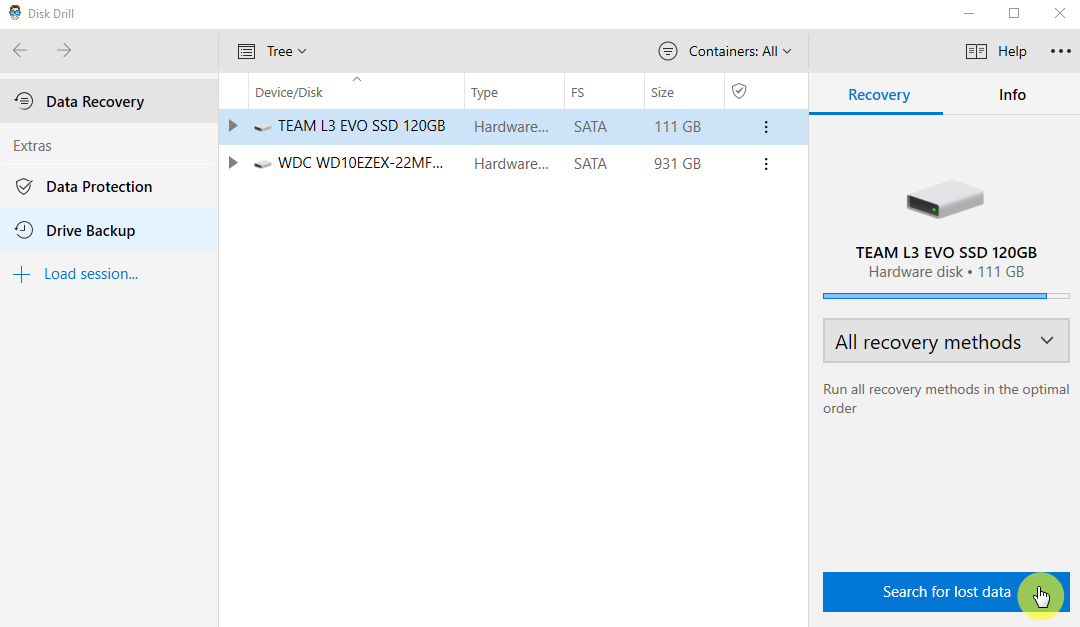
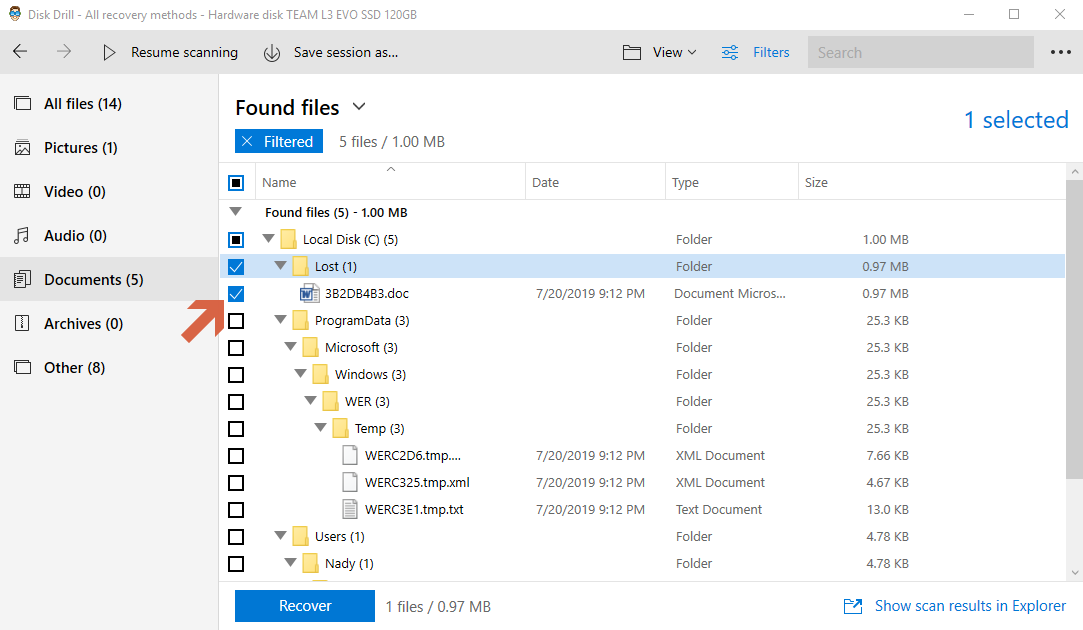
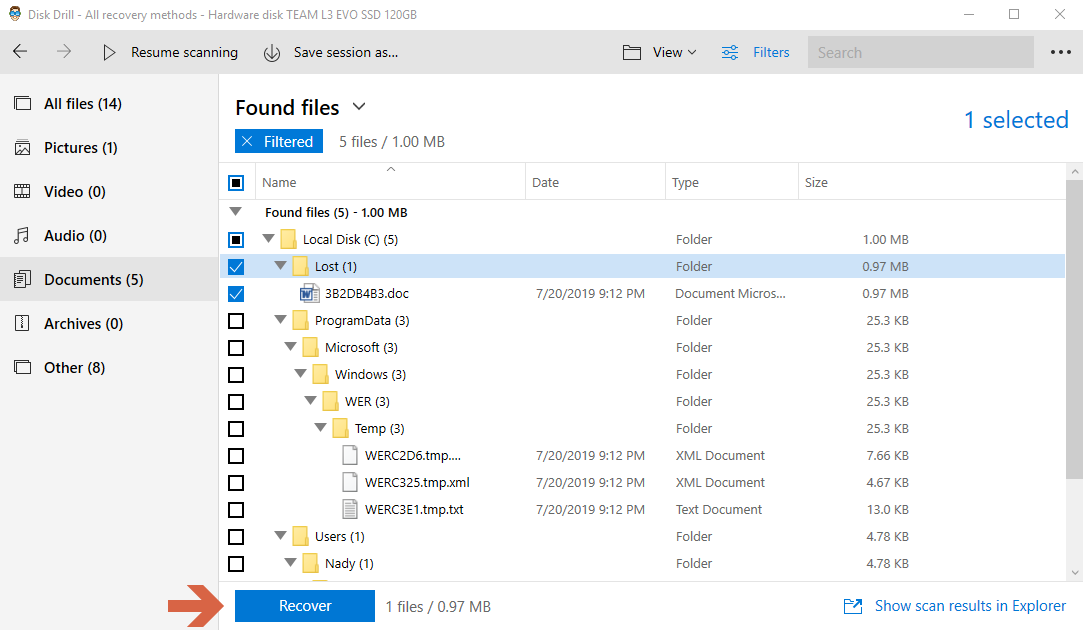
The second you launch Disk Drill, you notice that it certainly doesn’t look like your average data recovery tool. For starters, Disk Drill has a beautiful user interface that makes it effortless even for complete novices to figure out how to recover deleted Word documents with it.
💯 When you instruct Disk Drill to begin the recovery process, its advanced data recovery algorithms start analyzing the content of your hard drive and looking for even the tiniest bits and pieces of files, which it can then piece together to recover the original file as if it was never deleted in the first place.
✔️ All major storage devices are supported, so it doesn’t mean if you’re reading this article because you want to learn how to retrieve deleted Word documents from a traditional hard drive or a portable USB flash drive—Disk Drill works equally well with all kinds of storage devices.
📁 Interesting Read: How to Recover Deleted or Unsaved PowerPoint FileIt can be pretty frustrating to lose your Word file when you’ve spent so much time working on it. While there are several available methods to help recover your lost or deleted files, it might be a good idea to follow a few practices that can help prevent data loss. Let’s go through some of these tips and tricks:
It’s possible to lose your Word documents for a variety of reasons. While you must take steps to safeguard your files, data loss can often be unforeseen and unpredictable. In such situations where you end up losing your files, you can choose from the many available data recovery methods.
The solutions mentioned in this article are quite reliable, safe, and user-friendly. You just need to follow a few simple steps to recover your lost or deleted word file for free.